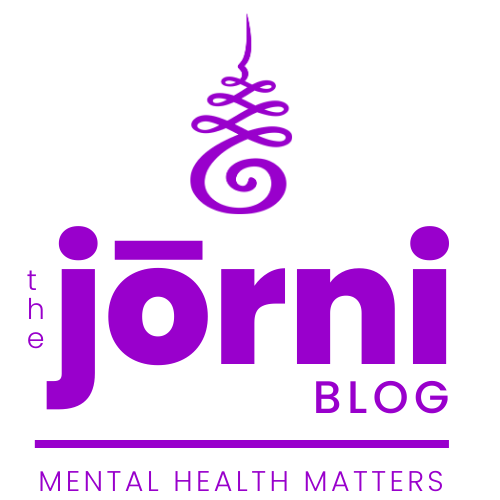The Power of Resilience in Uncertain Times
Resilience is often thought of as the ability to “bounce back,” but real resilience is something deeper. It’s the ability to adapt, grow, and redefine ourselves in the face of uncertainty. Life doesn’t always unfold as planned. Setbacks happen, opportunities shift, and the vision we once held for our future may no longer fit. But instead of seeing change as something to fear, resilience teaches us that uncertainty is an invitation to reinvent, to discover, and to evolve.
Resilience runs deeper than enduring hardship. It’s about learning to sit with discomfort, embrace the unknown, and trust that new possibilities can emerge even from the most challenging moments. Whether it’s a career pivot, a personal struggle, or a season of transition, resilience gives us the tools to move forward with courage rather than getting stuck in fear or frustration.
But resilience isn’t something we either have or don’t. It’s something we cultivate. It’s built through the choices we make daily, the mindset we adopt, and the willingness to shift our perspective. Instead of seeing change as a loss, what if we saw it as a doorway to something greater?
Finding Peace in the Chaos
Giovanna Silvestre’s journey is anything but ordinary. From the high-energy world of Hollywood to a period of deep self-exploration, she has redefined what it means to embrace change and uncertainty. Leaving a promising career in entertainment behind, she found herself in a profound state of questioning—who am I without the titles, the achievements, the external validation? That moment of darkness became the catalyst for a journey of reinvention, leading her to build a brand, write a book, and cultivate a movement that encourages others to find clarity in confusion.

She founded Confused Girl in the City, a one-of-a-kind activewear brand inspired by the energy of healing crystals. Giovanna’s true mission is to help others navigate uncertainty with courage and curiosity.
The Role of Identity in Resilience
Resilience means more than overcoming obstacles. It defines who we believe we are in the face of them. Our identity shapes how we handle challenges, how we adapt to change, and ultimately, how we rebuild when life doesn’t go as planned. When we view ourselves as strong, capable, and adaptable, we navigate adversity with confidence. But when our identity is tied to external circumstances like titles, achievements, or relationships, any disruption to those can feel like a personal failure.
Separating Identity from Circumstance
Many people struggle with resilience because they see setbacks as a reflection of their worth. Losing a job, ending a relationship, or failing at something doesn’t mean we are failures. It means we are human. The key is to see challenges as external events, not internal definitions of who we are.
When we recognize that our identity is not built on any single success or failure, we gain the freedom to evolve. We stop clinging to what was and start embracing what could be.

Rewriting Self-Talk
The way we speak to ourselves in difficult moments determines whether we rise or retreat. Negative self-talk reinforces doubt and fear, while positive self-talk builds resilience. Instead of, “I can’t handle this,” resilience says, “I am learning how to handle this.” Instead of, “This is the end of the road,” resilience says, “This is a new beginning.”
Shifting self-talk from self-defeating to self-supportive strengthens identity. The words we choose matter, and they can either hold us back or push us forward.
Adapting Without Losing Yourself
Resilience doesn’t mean changing who you are but it can mean changing how you navigate challenges. When faced with major transitions, we often fear losing our sense of self. But true resilience allows us to adapt while staying connected to our core values, passions, and purpose.
The most resilient people aren’t those who never struggle. They are usually the ones who redefine themselves without compromising what matters most.

Expanding the Definition of Success
If our definition of success is rigid, we will always fear failure. But when we expand our perspective, we see that success isn’t just one outcome. It is growth, learning, and progress in any form.
Success doesn’t always mean achieving a specific goal. Sometimes, it means surviving a tough season. Sometimes, it means having the courage to start over. When we redefine success to include resilience itself, we stop seeing setbacks as failures and start seeing them as necessary steps toward something greater.
The Uncertainty Paradox: Why Discomfort is Necessary for Growth
We crave stability, but growth is inherently uncomfortable. Change forces us into the unknown, stripping away the certainty we often rely on to feel safe. The paradox of resilience is that it requires us to embrace the very discomfort we instinctively resist.
Letting Go of the Old Narrative
One of the biggest barriers to resilience is attachment to who we thought we were, what we thought we wanted, and how we believed life was supposed to unfold. When we hold too tightly to a past version of ourselves, we close off the opportunity to evolve.
Letting go doesn’t mean forgetting or erasing the past. It means allowing ourselves to step into new identities, new dreams, and new ways of defining success. The more we resist change, the more we suffer. The more we accept and adapt, the more resilient we become.

Redefining Failure as Learning
Failure is often seen as the opposite of success, but in reality, it’s a stepping stone toward it. Every misstep, every detour, and every closed door carries a lesson that helps refine our path and shapes who we become.
Instead of fearing failure, what if we embraced it as part of the process? What if success wasn’t about getting everything right, but about learning, adjusting, and continuing forward? Those who build the strongest resilience aren’t those who never fail. They are the ones who refuse to let failure define them.
Trusting That Uncertainty Leads Somewhere Meaningful
Some of the best things in life begin in uncertainty. A new career, a deep relationship, and a major life shift can all of these start with the unknown. The discomfort of transition isn’t a sign that we’re lost; it’s a sign that we’re in motion.
Resilience teaches us to sit with uncertainty without needing immediate answers. It allows us to trust that, even when we can’t see the full picture, each step forward brings clarity. The future isn’t something we predict but rather something we create, moment by moment.

Cultivating Curiosity Over Control
When faced with uncertainty, our instinct is often to grip tighter, to force certainty where there is none. Resilience reaches beyond control and embraces curiosity, prompting us to ask, “What else is possible?” instead of resisting what is.
Curiosity shifts fear into opportunity. It allows us to explore, pivot, and see possibility instead of limitation. When we approach change with a mindset of openness rather than resistance, we invite growth rather than fight against it.
The Emotional Side of Reinvention
Reinvention goes beyond practical steps and carries an emotional element as well. Stepping into something new often requires grieving what was left behind. Even when change is necessary, there is loss in letting go. Old identities, old dreams, and old versions of ourselves don’t just disappear without emotion.
Resilience means allowing space for both excitement and grief and for recognizing that we can be both grateful for the past and ready to embrace the future. Too often, we judge ourselves for feeling lost, afraid, or uncertain when we step into the unknown. But these emotions don’t mean we’re failing. They mean we’re evolving.

Building resilience means learning how to navigate emotions with self-compassion, patience, and trust, rather than shutting them down. The more we honor our emotional experience, the stronger we become in shaping what comes next.
The Strength in Surrender
We often equate strength with control and the ability to push through, to hold it together, and to have all the answers. But some of the strongest people are those who have learned the power of surrender. Not surrender in the sense of giving up, but in the sense of trusting the process, releasing the need for certainty, and allowing life to unfold naturally.
Surrender doesn’t mean passivity; it means choosing to work with change instead of against it. It means recognizing that sometimes, the greatest breakthroughs come not from forcing a path, but from stepping back and allowing a new one to reveal itself.

True resilience acknowledges that even when we break, there is space to rebuild.
Breaking Free from the Fear of Change
At the core of resilience is one fundamental shift: changing our relationship with change itself. When we fear change, we fight against it. We stay in places, careers, or mindsets that no longer serve us simply because they feel familiar. But when we stop seeing change as a threat and start seeing it as a catalyst, everything shifts.
Change is no enemy and it usually offers a path forward. Every challenge, setback, and transition holds the potential to move us into something greater. The strongest, most fulfilled people aren’t those who avoided change, but those who embraced it, navigated it, and used it to create something better.

Change will come. It always does. The real question is whether we'll resist it or rise with it.
Building a Resilience Toolkit
Resilience goes beyond crisis moments because we cultivate it before we need it. Like any skill, it requires practice, reinforcement, and the right tools to strengthen it over time.
Emotional Agility Practices
Resilience means processing emotions in a way that allows forward movement, rather than avoiding them. Journaling, mindfulness, and deep breathing exercises help create emotional space to navigate difficult moments without getting stuck in them.
When we train ourselves to pause, process, and reframe challenges, we build emotional agility, the ability to respond rather than react.

Community and Support Systems
No one builds resilience alone. Strong support systems provide perspective, encouragement, and reassurance when we face setbacks. Investing in relationships, seeking mentorship, and building a network of people who uplift rather than discourage strengthens our ability to persevere.
When life gets difficult, having people who remind us of our strength can make all the difference.
Physical Resilience for Mental Strength
The mind and body are deeply connected. Movement, nutrition, and sleep all play a major role in mental resilience. Exercise releases endorphins that improve mood, balanced nutrition fuels mental clarity, and proper rest supports emotional stability.
Taking care of physical health creates a foundation for resilience, making it easier to navigate emotional and psychological challenges.

Micro-Challenges for Growth
Resilience grows when we step outside of our comfort zones. Small, intentional challenges, like trying something new, setting a difficult goal, or pushing past self-imposed limits, build confidence and adaptability.
The more we prove to ourselves that we can handle challenges, the more resilient we become. Every challenge, no matter how small, strengthens the belief that we are capable of overcoming bigger ones.
The TAKEAWAY
Resilience is the very essence of how we shape our lives. Every challenge, every unexpected twist, every moment of uncertainty forces us to make a choice: do we shrink into fear, or do we expand into possibility? Those who cultivate resilience don’t just endure hardship; they transform through it. They learn to trust themselves, to adapt without losing their identity, and to move forward even when the path is unclear. Without resilience, life feels like a series of disruptions; with it, every setback becomes an opening to something new.

If we resist change, we risk staying stuck in a version of ourselves that no longer fits. The truth is, resilience isn’t about being unshaken. It’s about learning how to rebuild, reimagine, and redefine what’s possible after everything falls apart. It’s about having the courage to let go of what no longer serves us, even when it’s familiar, and embracing the unknown with curiosity rather than fear. In doing so, we unlock a level of personal power that no external circumstance can take away. We stop seeing change as something happening to us and start recognizing it as something happening for us.
Imagine a life where uncertainty doesn’t paralyze you but propels you forward. Where failure doesn’t break you but builds your strength. Where you trust yourself enough to face whatever comes next without losing your sense of self. That’s what resilience makes possible. Resilience stands as a way of living: meeting the world with openness, confidence, and the unwavering belief that no matter what happens, you will find your way through.


